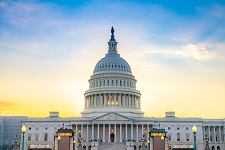
By Kritika Agarwal
A government shutdown went into effect on October 1, with no end in sight. The shutdown is a result of congressional failure to pass either appropriations for the 2026 fiscal year or a stopgap measure – referred to as a continuing resolution – that extends FY25 funding for a few months while lawmakers negotiate a deal.
Government shutdowns have serious negative consequences for the American people, including for the nation’s higher education and scientific research enterprise.
During a shutdown, most government activities (including those of federal science agencies and the Department of Education) come to a halt as federal employees deemed “nonessential” are furloughed. According to the American Association for the Advancement of Science, employees deemed nonessential “are not permitted to perform any of their work duties during the shutdown” and “any outcomes of their duties, such as research, reports, or grant management” is put on hold until Congress reaches an agreement to reopen the government.
Because of the shutdown, agencies such as the National Institutes of Health and the National Science Foundation have stopped reviewing grant proposals and making new awards, creating costly backlogs and broad delays across the biomedical and scientific research enterprise. These risk slowing the pace of scientific innovation and creating funding uncertainties for researchers and students.
While institutions with active grants can usually continue to draw funds during a shutdown, they cannot get technical or administrative support from agency staff. The NIH has also stopped admitting most new patients for its clinical trials and basic research performed by NIH scientists comes to a halt.
The Department of Education, meanwhile, has furloughed nearly 90% of its staff as a result of the shutdown. It plans to continue to disburse student aid, including Pell Grants and Federal Direct Student loans, during the shutdown, but will cease any new grantmaking activities. The department is currently in the midst of developing rules to implement provisions in the H.R. 1 reconciliation bill passed earlier this year, and its rulemaking process is continuing during the shutdown.
Government shutdowns have both near-term and long-term impacts. This time, especially, the Trump administration has threated to lay off federal workers and to make irreversible cuts to federal agencies during the shutdown.
In the long term, according to a AAAS analysis, shutdowns can affect federal employees’ morale, affect trade and the U.S. economy, and affect the finances of the American people. While universities can usually weather short-term shutdowns, a prolonged shutdown could significantly slow the pace of scientific research. “For scientists, shutdowns can cause significant delays in research outcomes, can cause financial uncertainty for more than just those directly involved, and increase the loss of institutional knowledge from employees that leave,” AAAS noted.
Last week, AAU President Barbara R. Snyder issued a statement urging Congress and the president to “find a responsible way to ensure that the government remains open and does not shut down.” She noted: “The longer Congress fails to reopen the government, the more sustained the shutdown’s effects will be on students, faculty, and researchers.”
Kritika Agarwal is assistant vice president for communications at AAU.